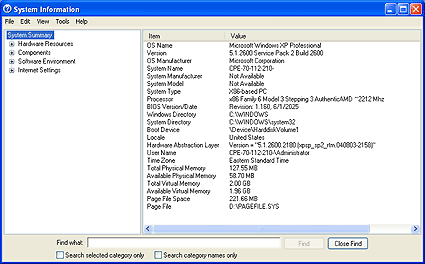Test Setup

Much has changed since 2001 for both the Linux and Windows environments and the hardware components that drive them. Some of these changes promote desktop computing to a whole new level of performance such as PCI Express and Serial ATA (SATA) interfaces, where others are exclusionary such as the adoption of platform-specific graphics libraries that many well-respected benchmark applications require.

The Reference System Then
The original article was written in the age of Windows 95, 98, and 98 Second Edition (SE), all of which have been retired in favor of more recent developments. The former demonstration system build consisted of a then-current 2 GHz Pentium 4 processor accompanied by 256 MB of PC800 RDRAM and operating a 7200 RPM Seagate IDE drive, none of which represent current market choices. Furthermore, the AGP-based Leadtek Winfast GeForce3 graphics card is no longer current, and more popular PCI Express interface and fourth generation GeForce chipsets have proven worthy replacements.
The Reference System Now
The current test configuration consists of the following: an AMD Athlon 64 3500+ processor operating at 2.2 GHz, supported by 2 GB of DDR400 SDRAM, operating from a 7200 RPM Western Digital SATA drive. The reference motherboard is a Chaintech VNF4 using Nvidia's nForce4 single-chip solution paired with an eVGA GeForce 6600 PCIe graphics card with 128 MB of video memory (admittedly conservative by today's standards, but a good choice for Linux). As such, it can be considered a mid-level candidate and offers a fair representation of real-world utilization.
Windows XP Service Pack 2 (SP2) is the current flagship Windows product on the desktop with a forthcoming Windows Vista poised to take this spot in the near future. Instead of running Windows 98 within Red Hat 7.1 as did the review in 2001, this test configuration examines Windows XP (SP2) operating under Fedora Core 5.
Stay on the Cutting Edge
Join the experts who read Tom's Hardware for the inside track on enthusiast PC tech news — and have for over 25 years. We'll send breaking news and in-depth reviews of CPUs, GPUs, AI, maker hardware and more straight to your inbox.
Ed Tittel is a long-time IT writer, researcher and consultant, and occasional contributor to Tom’s Hardware. A Windows Insider MVP since 2018, he likes to cover OS-related driver, troubleshooting, and security topics.
Most Popular


